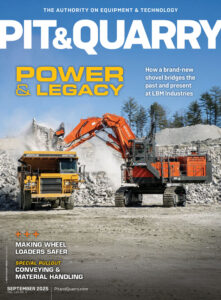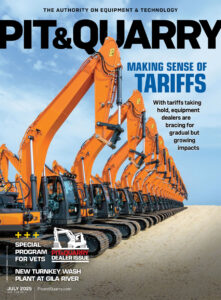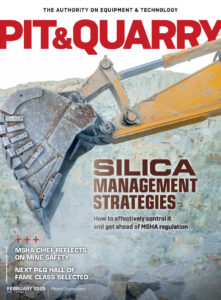Summit Materials CEO Anne Noonan also reflected on residential construction during a first-quarter earnings call.
“Based on National Association of Home Builders data, each 25 basis points decline in 30-year mortgage rates between 6 percent and 7 percent could price in an incremental 1.3 million households into the home buying market,” she says. “This, together with the lock-in effect and record-low levels of housing inventory, are encouraging signs that single-family construction activity could experience a more swift and more dramatic bounceback either later this year or in 2024.”
Single-family construction will be very interesting to observe as the year progresses, especially if the Fed reverses course and lowers interest rates.
Nonresidential and nonbuilding outlook

Onshoring and infrastructure projects remain at the top of the built environment due to federal funding from the IIJA and other legislation. Many CEOs noted in their first-quarter remarks that the IIJA, CHIPS Act and Inflation Reduction Act funding was beginning to hit their backlogs.
“Heavy industrial projects led by energy, onshore manufacturing and data centers continue to drive demand in the segment, accounting for the majority of total nonresidential shipments,” Nye says.
Adds Kyle Larkin, CEO of Granite Construction: “[B]idding activity … remains robust, aided by the federal infrastructure bill or IIJA.”
The data supports this narrative, as first-quarter highway and street spending rose 20 percent year over year, according to the U.S. Census Bureau.
Aggregate and ready-mix producers were also able to rebound from the declining residential sector and shift their volumes to infrastructure projects.
Says Maher Al-Haffar, CFO of Cemex: “[I]n terms of the drivers of demand in the U.S., clearly the strongest driver is the industrial sector. … We are seeing definitely a lot of benefits from the CHIPS Act and from the Inflation Reduction Act.”
Additionally, Holcim CEO Jan Jenisch notes that industrial buildings and factory extensions are beginning to hit their books.
The bottom line is that aggregate and asphalt producers are starting to benefit from IIJA funding, and ready-mix producers can shift their volumes away from single-family residential to industrial projects.
Conclusion
Construction materials firms appear to be in the driver’s seat as we enter the core operating season.
Price increases have been successful and construction materials firms indicate that additional price increases are forthcoming. Also, backlogs are beginning to build up with funding from federal legislation enacted over the past two years.
Inflation, although sticky, appears to be easing. The wild cards for the year will be the Fed’s stance on interest rates and a return to normal weather patterns.
The outlook for 2023 remains a function of each company’s end market portfolio. Those weighted toward nonresidential construction and highways and streets are in good shape. Those dependent on residential will have a wait-and-see approach in the current balancing act that is the housing market: higher rates versus low existing supply.
All in all, the fundamentals are in place for the construction materials industry to have a solid year.
George Reddin, Rob Mineo and Evan Coughlin are with FMI Capital Advisors.











